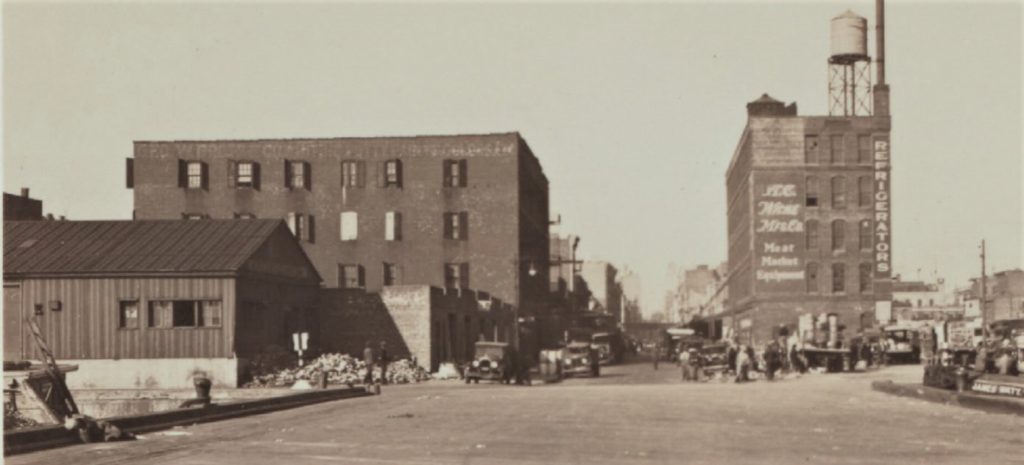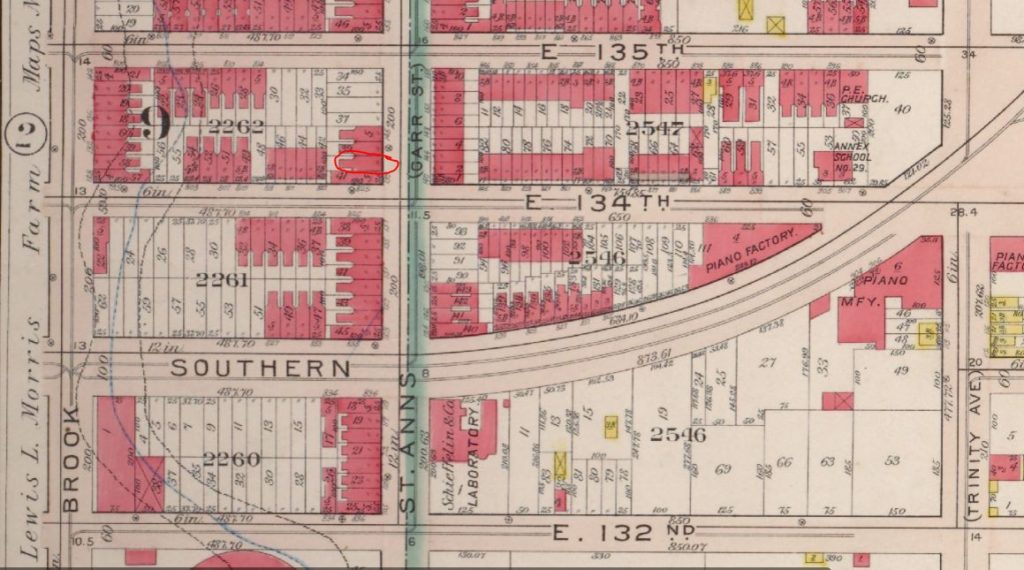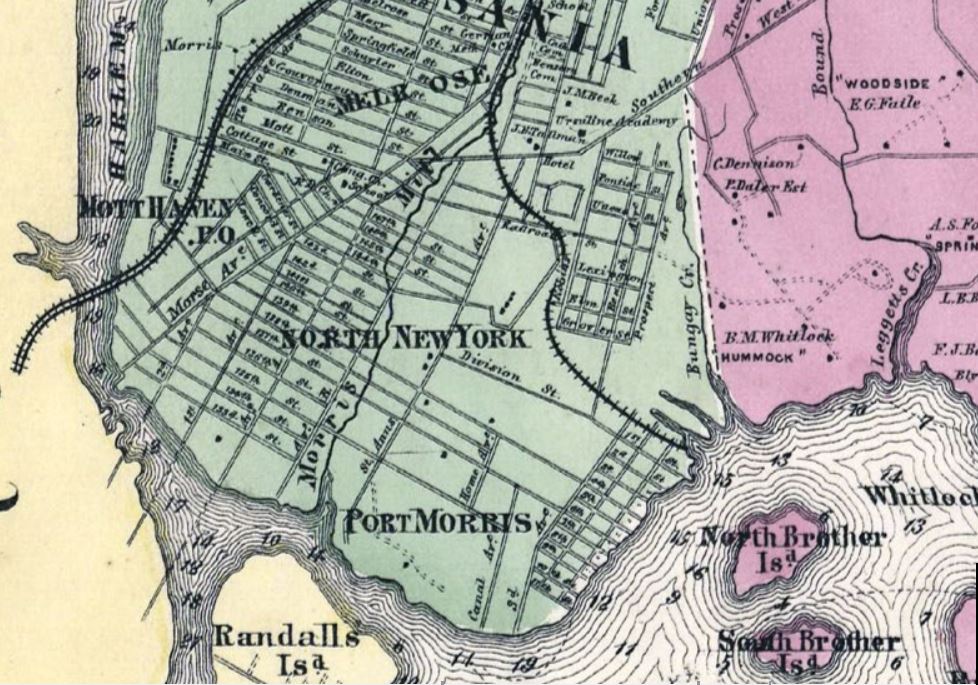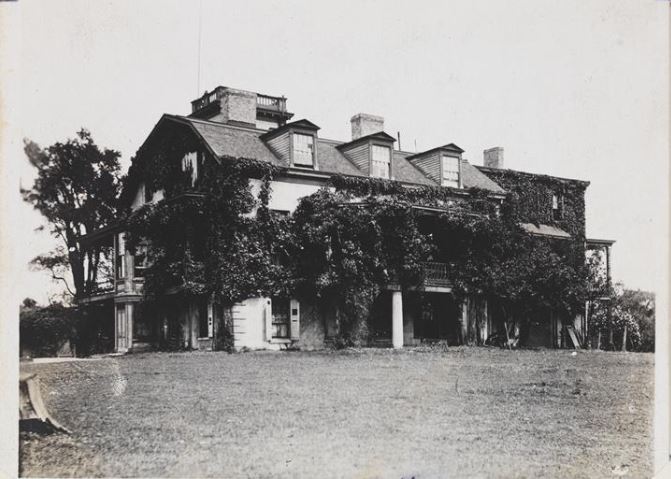
In January 1901, give or take a month, Mrs. L.J. Watts, the janitress for the five-story tenement at 141 Saint Ann’s Avenue in the Bronx, opened her heart–and the door–to a purring fur-ball that was seeking shelter from the cold. Mrs. Watts led the kitten into the cellar and gave her some food.
Luckily for the stray cats of Saint Ann’s Avenue, Mrs. Watts’ heart was also a soft one with lots of room for love. The next morning, she found three more cats, all of whom she welcomed and fed in the cellar. From that point on, the cats kept coming.
As a reporter noted in the New York Times on March 4, 1901, “tramp cats like tramp men have their means of letting each other know of anything good that may exist for all.” Two days after Mrs. Watts took in the one kitten, there were 10 more cats waiting for her at the cellar door. By the end of the week, she had almost 70 cats.
Mrs. Watts confessed that she had a soft heart, and she welcomed the poor cats out of the kindness of her heart. She told the reporter that she could not bring herself to shoo the suffering creatures away.
By the end of the week, the tenants in the building began grumbling. Either the cats moved out, or they would.
Some of the tenants told the press that they had been awakened several times in the middle of the night by what they thought was a wailing infant. One woman on the third floor complained, “Grand opera is bad enough, where they sing in a different language every night, but this polyglot performance sort of continuous Tower of Babel style can’t go on any longer.”
Within a few months, Mrs. Watts had almost 50 cats living in the cellar. Regretfully and with some misgivings of conscience, Mrs. Watts went to the Health Board. “Take them by ones, take them by twos, take them in baskets, wagons–only take them,” she petitioned. But the board told her they could do nothing for her.
The Health Board directed the cat lady to apply to the Society for the Prevention of Cruelty to Animals. “Bring them to One Hundred and Second Street and East River and we’ll prevent any further cruelty,” they wrote her. But Mrs. Watts had no means of transportation, so that was not a viable solution either.

In the end, it was one of the disgruntled tenants who dispersed the cats, albeit, in a rather cruel way. According to news accounts, Mr. Bergman purchased two pounds of sulfur, which he took to the cellar, and, after closing all the doors except the front one, he placed on a large iron pot. He then dumped the sulfur into a shovelful of live coals and made his escape.
In less than fifteen minutes, 39 cats of all sizes and colors rushed from the basement and scattered about the neighborhood. I have a feeling that they may have all come back eventually, but nothing was reported in the press.
A Brief History of Saint Ann’s Avenue

Saint Ann’s Avenue was located in the Port Morris section of the Bronx,
which was established as a seaport in 1842 by Gouverneur Morris II, son of United States founding father Gouverneur Morris (1752-1816). Back then, Port Morris was part of the large township of Morrisania.
In the early 1800s, Saint Ann’s Avenue was called Fordham Avenue. In addition to the Boston Post Road and the railroad, it was one of only three transit routes through this section of the Bronx.


At the age of 57, Gouverneur Morris married Anne Cary Randolph of Virginia. Their son, Gouverneur Morris II, was born in Morrisania in 1813. The son became a pioneer railroad builder and a notable figure in Bronx real estate development; he was the first to develop Port Morris in the 1840s.
In the 1850s, the Port Morris waterfront developed as an industrial center for businesses such as stone works and furniture and piano factories. By the late 1800s, Port Morris was the capital of piano manufacturing in the United States. Throughout the inland section of the seaport, developers constructed apartment buildings and commercial blocks to serve factory employees.
The large, 5-story double flat with stores at 141 Saint Ann’s Avenue where the cats sought shelter in 1901 was constructed some time during the 1880s. In the early 1900s, the building was owned by Barnett Fishman and Jacob Berman.



In 1905, there was a meeting in the office of Olin J. Stephens, president of the North Side Board of Trade, to discuss a plan to save the old Morris mansion from being converted into a freight terminal for the New York, New Haven, and Hartford railroad terminal, which then owned the property. The plan was to turn the property into a public park, but sadly, those plans fell through.

On November 22, 1905, the New York Times reported, “recently our hearts ached at the demolition of the most prominent historic landmark of the Bronx–the venerable Gouverneur Morris mansion. The New York, New Haven, and Hartford Railroad Company coveted its site, and it is a thing of the past.”




